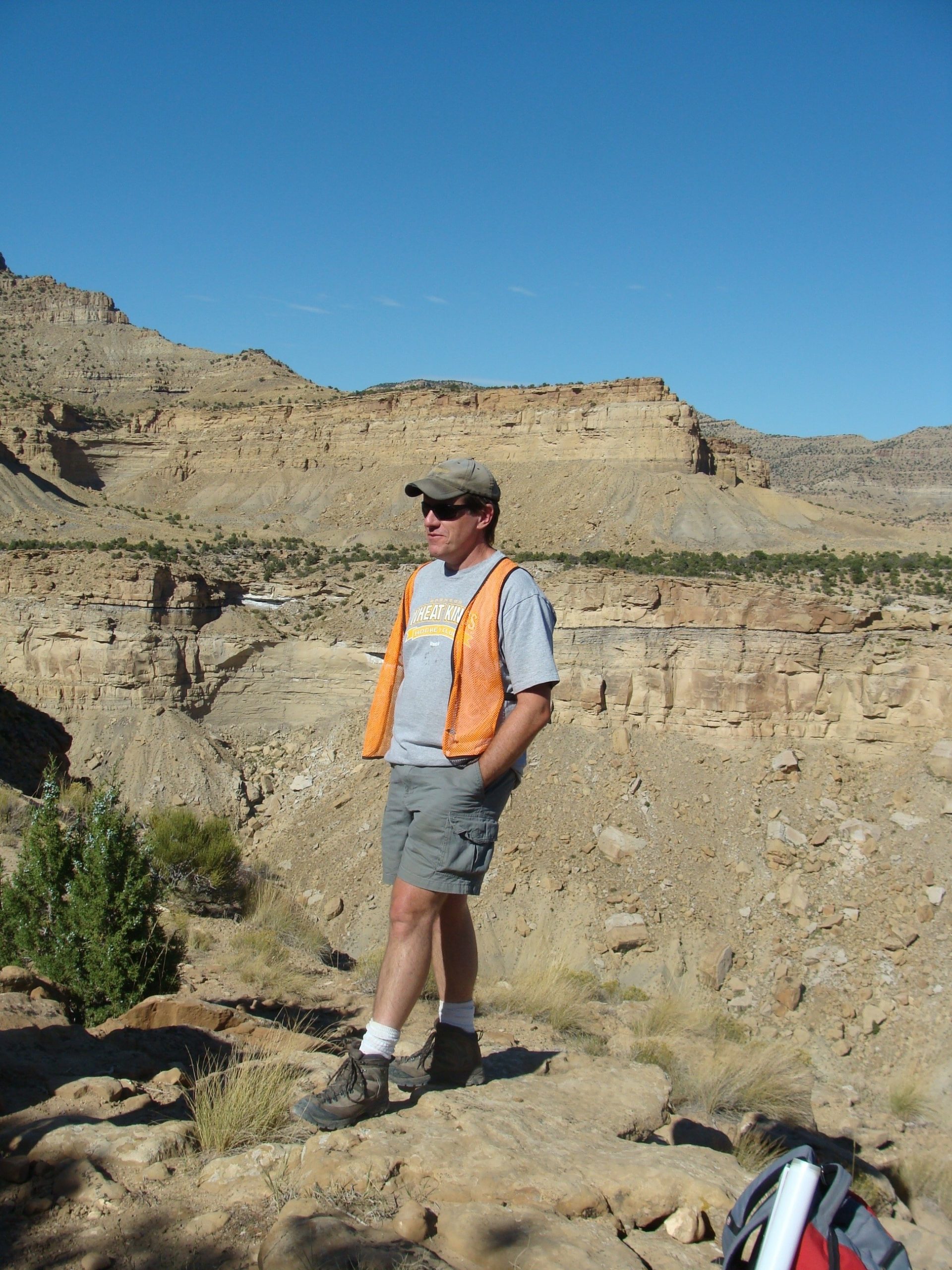
By
Simon Pattison
September 2021
Print Version
What you need to know
Sequence stratigraphy is a widely used and proven technique for unraveling the geological history of coastal areas worldwide. Stratigraphic patterns are driven by changing sea levels (climate), sediment supply (climate, tectonism), and subsidence rates (tectonism). Conventional sequence stratigraphic models are based on exceptional outcrop exposures of fluvial (river), coastal plain (lagoon, swamp), shallow marine (delta, beach, shoreface), and shelf environments in the 300 kilometer-long Book Cliffs of Utah and Colorado. A multi-decade-long research program has exposed serious flaws in the conventional model. Stacking patterns are predominantly driven by fluctuations in sediment supply and not sea level change. An alternative sequence stratigraphic model is a much better fit.
Why this research is important
Sequence stratigraphy is a key branch of geology for understanding and reconstructing Earth history. Sedimentological facies analysis allows for the interpretation of processes and environments of deposition. Combining high resolution sequence stratigraphic and facies analyses paints a very detailed picture of environmental change through time, down to a resolution of a few hundred years. High resolution sequence stratigraphy is the main technique for correlation, prediction, and modelling in sedimentary rock strata. Applications include modelling and predicting the 3D sedimentary architecture of fluid-bearing reservoir rock (e.g., freshwater, oil, gas) and documenting rates and magnitudes of environmental change through time, including sea level, climate, and tectonic activity.
How the research was conducted
This was an intensive field-based research program. The study area extends across the entire 300 km length of the Book Cliffs, from east-central Utah to western Colorado. The Book Cliffs outcrop belt has some of the best exposed fluvio-deltaic deposits in the world. Numerous side canyons and re-entrants dissect the main cliff-line, allowing for unparalleled three-dimensional visualization and access. An extensive data base, compiled over 25+ years of field work, consists of 45 outcrop measured sections, 31,588 high resolution digital photographs, 6,265 paleocurrent measurements, 335 rock samples, 147 thin sections, 111 well logs, and two cores. The measured sections integrate high resolution sedimentological and stratigraphic observations at a mm to cm-scale, allowing outcrop correlation of sedimentary architecture, facies, and surfaces. High resolution field data were collected at each measured section and supplemented with nearby observations of sedimentary architecture and facies geometries leading to a high resolution correlation framework. Every canyon, ridgeline, and side canyon were traversed and studied. Field-based data collection focused on identifying and correlating high frequency surfaces and rock packages, paleocurrent measurements, and sandstone sample collection.
What the researcher found
A critical re-examination of the archetypal Desert Member to Castlegate Sandstone stratigraphic interval in the Book Cliffs of Utah-Colorado revealed that, contrary to earlier conventional models, there is a clear temporal, genetic, and spatial linkage of nearshore terrestrial and shallow marine deposits. Stacking patterns are predominantly driven by fluctuations in sediment supply and not relative sea level change. Hence, widespread application of the conventional sequence stratigraphic model has led to an over-estimation of sea level rises and falls. An alternative sequence stratigraphic model showing temporally and spatially linked, laterally adjoining, nearshore terrestrial and shallow marine facies belts is the best fit for the Campanian Book Cliffs strata. This model should be widely applicable to similar nearshore terrestrial and shallow marine settings worldwide. The alternative correlation style generates significantly different predictions of sand body continuity, connectivity, and distribution. Similar nearshore terrestrial to shallow marine settings worldwide should be critically re-examined in light of the alternative sequence stratigraphic model.
How this research can be used
Applications include improved correlating and modelling of reservoir and non-reservoir rock bodies across terrestrial and shallow marine facies belts. The research results could have major implications for predicting the occurrence and continuity of sandstone reservoirs (i.e., hydrocarbon and freshwater reservoirs) and for interpreting the history of sea level changes. It will also add to the growing body of scientific knowledge on the scale, timing, and frequency of natural environmental change.
About the Researcher
Keywords
- Book Cliffs
- sedimentology
- sequence stratigraphy
Publications Based on the Research
Pattison, S. A. J. (2019). Using classic outcrops to revise sequence stratigraphic models: Reevaluating the Campanian Desert Member (Blackhawk Formation) to lower Castlegate Sandstone interval, Book Cliffs, Utah and Colorado, USA. Geology, 47(1), 11–14. https://doi.org/10.1130/G45592.1
Pattison, S. A. J. (2020). Sediment-supply-dominated stratal architectures in a regressively stacked succession of shoreline sand bodies, Campanian Desert Member to Lower Castlegate Sandstone interval, Book Cliffs, Utah-Colorado, USA. Sedimentology, 67(1), 390–430. https://doi.org/10.1111/sed.12647
Editor: Christiane Ramsey
Read more BU Research
Research at Brandon University follows comprehensive policies designed to safeguard ethics, to ensure academic integrity, to protect human and animal welfare and to prevent conflicts of interest.

